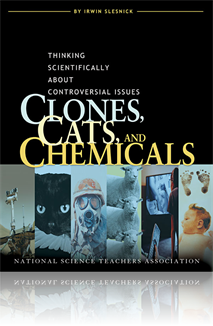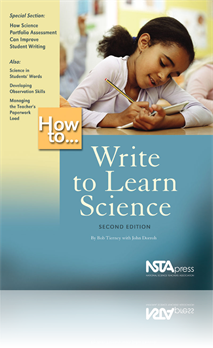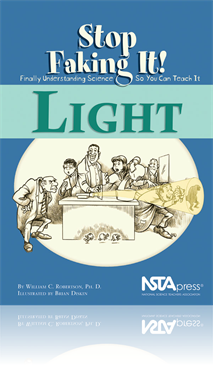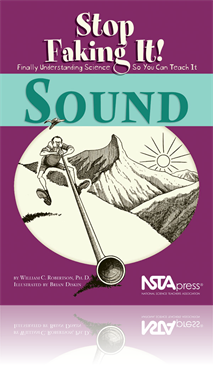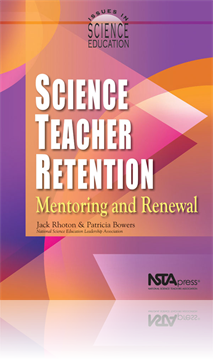All Book Chapters
Book Chapter
Around the world, coastlines are retreating. Economic and environmental realities offer two choices: plan a managed retreat now, or undertake a vastly more expensive program of armoring the coastline as required and retreat through a series of unpred...
Book Chapter
Modern hunting is embroiled in a major controversy. There are approximately 14 million hunters confronting an indeterminate number of animal rights activists who aim to have hunting banned in the United States. The two groups are polarized. This cha...
Book Chapter
During the first week of class, strive to create an atmosphere of mutual trust and respect. This gives the students a chance to get to know you as a person, and you will also get to know them in the process. A key challenge is to make students feel c...
Book Chapter
This book starts with a rather simplistic view of what light is. This chapter starts with a simple explanation which will be easy to understand and it will explain quite a few things. Also, historically, it's the one that came first; hence the title...
Book Chapter
You're probably really upset that all you have so far is a simple little ray model of light. When do we get to the good stuff, you say? How about now? As a bonus, you get to look at lots of pretty colors. This chapter addresses how light can be model...
Book Chapter
It's time to take some of the things we know about light and put them to good use. In this chapter, the author discusses various optical instruments like antennae and lenses, and in the Applications section, you get to learn how telescopes work. That...
Book Chapter
If you browse through the sunglasses at your local department store, you'll find that some of them are advertised as "polarized." What is it that makes a pair of polarized sunglasses so special, and are they really better at reducing glare, as advert...
Book Chapter
Light doesn't always travel in straight lines. It can bend around corners, just like sound. When it does change direction like this, you end up with light waves that originated from different places coming together at one spot. This can lead to some ...
Book Chapter
This chapter is, as the title indicates, all about eyeballs and how they work. We'll use just about everything we've learned so far, plus one or two new things, including how to draw 3-D pictures. You'll be asked to do a number of little projects, on...
Book Chapter
Fire the Photon Torpedoes, Mr. Sulu!
Yeah, what about those photon torpedoes? Aren't photons supposed to be little light particles? Yes, they are, and they constitute the third model for what light is. Although much of the photon stuff is beyond the scope of this book, the author gives ...
Book Chapter
Stop Children, What's That Sound?
Aging hippies might recognize the title of this chapter from an old Buffalo Springfield song. Others will just have to ignore it, and realize that this is the first chapter in a book on sound. As you go through this book, you'll be exposed to scient...
Book Chapter
Unless you really haven't been paying attention to the world around you, you know that plucked strings produce sounds. Carlos Santana demonstrates this on a regular basis. Because stringed instruments are so commonly used to produce sounds, we're g...
Book Chapter
Sound travels in waves, but those waves aren't exactly like waves on a string. One nice things is that sound waves have all the same relationships between frequency, wavelength, and velocity that waves on a string have. In this chapter, we will fin...
Book Chapter
Harmonic convergence refers to a day back in 1987 where there was a particular planetary alignment. New Agers went crazy over the event, and if you want to get a taste of what it was like, enter harmonic convergence into your favorite Internet searc...
Book Chapter
Yep, you guessed it. This chapter is all about music. Yes, we've already talked about music and musical instruments, but we're going to get into this subject in more detail. For example, you might already know that larger musical intruments tend t...
Book Chapter
We've covered most of the basics of how sound is produced and transmitted, but we've left something out, and that's all the electronic devices we use to amplify sound, reproduce it, or get it from one place to another. How exactly does a CD player w...
Book Chapter
Turnover and Shortages among Science and Mathematics Teachers in the United States
After establishing how many teachers depart from their teaching jobs and how these rates compare with other occupations, this chapter presents statistics on the reasons why teachers move from or leave their teaching jobs. These data are drawn from it...
Book Chapter
Collaborative Efforts to Retain New Teachers: A University-School District Partnership
This chapter describes the Teacher to Teacher Program—a collaborative effort between Furman University and two local school districts. The program provides an avenue for improved teacher retention and mentoring. The partnership creates a community ...
Book Chapter
ASIST: An Induction Program for Science Teachers
Quality induction programs are needed for science teachers. This chapter describes one program—Alternative Support for Induction Science Teachers (ASIST)—developed specifically for beginning science teachers based upon their expressed and demonst...
Book Chapter
Honoring Adult Learners: Adult Learning Theories and Implications for Professional Development
Designers of adult learning must consider carefully the research on adult learning and change and factor this into learning designs. In this chapter, the author reviews a classic adult learning model and two contemporary theories—constructivism and...
Book Chapter
The Model Science Laboratory Project: Lessons Learned about Teacher Retention
This chapter presents the Model Science Laboratory Project in the Rice University/Houston Independent School District. The project provided support, training, and time for teachers to refine their instruction of science to urban students in the Houst...
Book Chapter
Beginning Teacher Mentoring Programs: The Principal's Role
Successful teacher mentoring programs require strong leadership. School principals must be prepared to provide this leadership by planning, organizing, implementing, and evaluating a mentoring program that is based on research and best practice. This...
Book Chapter
New science teachers may be retained using a multifaceted approach. First, school districts may use an on-site training program to induct new science teachers. Second, schools may arrange the master schedule to support new teachers. Finally, veteran ...
Book Chapter
Mentoring for Professional Renewal: The Kentucky Experience
This chapter offers an overall perspective on the value of mentoring for new and experienced teachers. It also identifies characteristics of effective mentoring drawn from reports of existing programs, primarily from a statewide teacher induction pro...
Book Chapter
Recruitment and Retention of Secondary Teachers in New York State
The chapter examines how one urban school district in New York State recruits and retains secondary science teachers. The main finding is that the recruitment, retention, and renewal of science teachers is practiced differently at the district and sc...
Book Chapter
Comprehensive Teacher Induction in Five Countries: Implications for Supporting U.S. Science Teachers
This chapter presents a National Science Foundation-funded study of beginning science and mathematics teachers in five countries. The study looks at teacher induction systems that are more comprehensive than most in the United States. For example, th...
Book Chapter
A number of studies concerning the mentoring of beginning teachers and their induction process are found in recent educational publications. A review of this literature guides professional educators as they formulate and implement the work of educati...
Book Chapter
Induction Programs for Science Teachers: What the Research Says
Induction programs play a critical role in the development of professional educators. These programs support beginning teachers as their preservice ideology is challenged and as they experience constraints in working in a new school climate. While in...
Book Chapter
Needs Assessment for Beginning Teacher Assistance Programs
This chapter makes several general suggestions to teams charged with developing beginning teacher assistance programs (BTAPs), then describes four specific types of needs assessment carried out in effective BTPAs—environmental needs assessment, beg...
Book Chapter
A Systematic Approach to Support Teacher Retention and Renewal
Teacher retention and renewal are critical issues facing school districts across the United States, with the need for teacher retention at a time when school districts are also facing a need for teacher renewal. It is imperative that school districts...
Book Chapter
Mentoring and Coaching for Teachers of Science: Enhancing Professional Culture
Mentor programs provide an opportunity to foster a professional culture that focuses on improving the teaching, learning, and assessing of science as well as a means to retain highly qualified new and experienced teachers. This chapter outlines key s...
Book Chapter
Personal Histories Supporting Retention of Beginning Science Teachers
Beginning science teachers enter the classroom with an early professional role identity formed from life experiences in science, education, and volunteer/work settings. These experiences, along with teachers' values and beliefs, can support new scien...
Book Chapter
The Reemerging Cycle of Teacher Supply and Demand: North Carolina Takes Action
This chapter presents a brief history of teacher shortages, particularly in the fields of science and mathematics. It describes numerous efforts by North Carolina, not only in recruiting individuals into the teaching profession but also in retaining ...
Book Chapter
Congratulations! You have secured a position to teach the fascinating world of science to middle school students! Science to young adolescents!?!?...
Book Chapter
Perhaps the most important skill a good teacher should possess is the ability to control students. A teacher who can devise fascinating and unique lesson plans for her classroom is useless if she can't get the kids to sit down and listen to her inst...
Book Chapter
Using Your Community Resources
Within the field of education, it is important for communities to take an active role in developing relationships with the local schools and learning facilities. One good reason in particular is that children and adolescents need to feel that they a...
Book Chapter
Teaming is a method of grouping students so they share the same set of teachers for their core subject areas—science, math, language arts, social studies, and sometimes physical education and health. Most often, teams are created when an entire gr...
Book Chapter
Our lives are ones of uncertainty and surprise, yin and yang existences. Some things we can control and others we are powerless to command, even with the best intentions. Teachers are not exempt from emergencies, jury duty, and illness. Luckily, m...
Book Chapter
Front-page articles in science and education periodicals and journals give voice to the growing concern that scores on nationwide science exams have either declined or, at best, have had a minute increase even after several years of pushing for bette...
Book Chapter
Whether your assigned classroom is for science labs or there is a specific lab area shared among several teachers, you need to set up properly for group experiments and other hands-on activities. There are several ways to set up lab groups in various...



